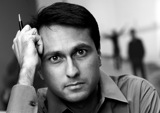This piece is part of an on-going blog series called Plurality 2.0 (watch video here). Full schedule of guest authors throughout April and May is available here.
Eboo Patel is founder and Executive Director of the Interfaith Youth Core, a Chicago-based international non-profit building a movement of young people committed to religious pluralism. Recently appointed to President Obama’s White House Council on Faith-Based and Neighborhood Partnerships, he writes The Faith Divide, a Washington Post blog, and is author of Acts of Faith.
Diversity and its Discontent
 The first thing my wife and I comment on when we go to a restaurant or a park is the diversity. We generally want more. We’re part of a generation of Americans raised on the “celebrate diversity†mantra. Our elementary school books were illustrated with pictures of kids of different colors. We read Toni Morrison and Richard Wright in college.
The first thing my wife and I comment on when we go to a restaurant or a park is the diversity. We generally want more. We’re part of a generation of Americans raised on the “celebrate diversity†mantra. Our elementary school books were illustrated with pictures of kids of different colors. We read Toni Morrison and Richard Wright in college.
So reading Robert Putnam’s study on the downsides of diversity is disconcerting. Putnam put the term “social capital†on the map in his book, Bowling Alone. Civic engagement, he believes, is crucial to America, and it is seriously in decline. He also released a publication stating that something essential to America is bad for civic engagement – diversity.
“Diversity, at least in the short run, seems to bring out the turtle in all of us,†he writes.
He explains further that people in more diverse communities tend to “distrust their neighbors, regardless of the color of their skin, to withdraw even from close friends, to expect the worst from their community and its leaders, to volunteer less, give less to charity and work on community projects less often, to register to vote less, to agitate for social reform more but have less faith that they can actually make a difference, and to huddle unhappily in front of the television.”
I frequently cite Diana Eck’s work, and I think it is absolutely central to thinking about this topic. Eck makes a crucial distinction between diversity and pluralism. Diversity is simply the fact of people from different backgrounds living in close quarters. Pluralism is the “energetic engagement†of those differences with the purpose of creating not only positive bonds but also active social capital. Diana’s work with the Pluralism Project exhibits where this is happening in America with respect to religious diversity, and where it’s not. It was Diana’s work that I relied on most heavily when founding the Interfaith Youth Core.
In other words, it’s not about whether diversity is good or bad. Diversity is a fact, and in America it’s not going away. The question is how to best engage the fact of diversity in a way that builds social capital and increases civic engagement. And when the pluralists don’t engage diversity by building positive social bonds, then we leave a vacuum that is often filled by extremists or bigots.
The truth is there is no turning back from American diversity. The only question is what we do with it. We need to invest – funding, time, energy, intellect – in institutions that actually work to engage diversity and turn it into pluralism.
Excerpted from The Faith Divide, March 30, 2008. For complete posting click here.